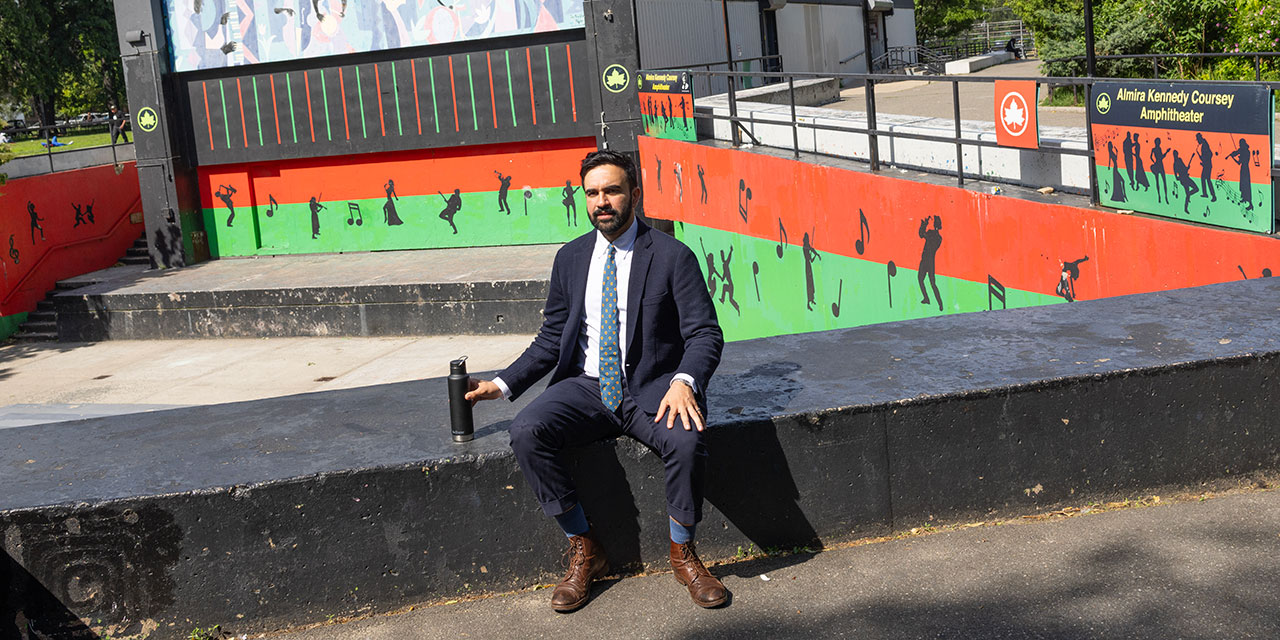
When election observers talk about the New York City mayoral race as it relates to the White House, they frame it as being about “two guys from Queens”—how will President Trump and the potential next mayor, Andrew Cuomo, get along? But there’s another guy from Queens in the race: State Assemblymember Zohran Mamdani. Mamdani and Trump may seem like opposites—and they are in many ways—but they do have something in common: their governance strategies depend on a persistent state of suspended economic reality.
As Mamdani narrows the gap with Cuomo in the Democratic mayoral polls, New York’s budget analysts point out that he’s doing well partly because he’s offering a bunch of free stuff: bus rides, childcare, a rent freeze for regulated apartments, and a city-owned grocery-store experiment to compete with for-profit retailers.
Finally, a reason to check your email.
Sign up for our free newsletter today.
Where does Mamdani get the idea that abolishing the farebox on buses will put him at the top of New Yorkers’ ballots? The idea isn’t likely to improve transit or alleviate poverty. The world’s most successful bus systems, from London to Bogotá, levy fares, and New York already subsidizes poorer residents’ rides. But lots of people take the bus—and maybe they will vote for Mamdani.
In this respect, free buses resemble one of the Trump campaign’s signature promises last year: no taxes on tips. The policy would cost around $10 billion a year and is an economic muddle. If the point is to help poor and middle-class workers, it would make more sense to offer a higher tax credit on all types of earned income, rather than favor one type over another. But many people earn tips—and tip-earners helped Trump in swing states.
And where does Mamdani get the idea that he can freeze regulated rents by decree? The mayor appoints members of New York City’s rent guidelines board, yes. But the board, under state law, must independently consider several factors in determining annual rent increases, including landlords’ costs. Viewed alongside Trump’s rhetorical intimidation of top officials at independent federal bodies, including the Federal Reserve, Mamdani’s assertion seems innocuous.
Similarly, who can argue that Mamdani is wrong to think that retail profits impede cheaper groceries, when Trump, too, wants to suspend the laws of retail economics with his tariffs, insisting that Walmart, for example, “eat” the higher costs?
Mamdani and Trump, though two generations apart in age, live in the same economic world—one in which neither federal nor local government has had to make any serious economic or fiscal trade-offs for decades.
What big program would Trump cut, or which tax would he raise, to pay for the losses from curtailing taxes on tips? Apparently, none. The Trump-imprinted House budget bill raises annual deficits by at least $2.5 trillion, even after projected spending cuts.
Unlike the federal government, New York City must balance its budget yearly, so Mamdani doesn’t have the luxury of running deficits. He proposes a supposedly pain-free alternative to fund most of his $10 billion annually in new government spending. He would raise the city’s corporate income tax, from 7.25 percent to 11.5 percent, and levy a new 2 percent tax on the city’s top 1 percent of households. He is unconcerned that higher taxes might accelerate population loss and shrink revenue.
Neither Trump nor Mamdani created the universe in which they live. Federal and local spending have outstripped inflation and population growth for decades. The last vestiges of modest fiscal responsibility were evident in the 1990s. At the federal level, President Bill Clinton cut back spending plans to appease bond investors. In New York, Mayor David Dinkins and a moderate city council ushered in a broad-based property-tax increase to fund, among other items, more cops. Both acknowledged that to get something, some share of the public beyond just the richest taxpayers would have to sacrifice. A few years later, to attract more tourists, Mayor Rudy Giuliani cut the hotel-tax rate. It was another nod to economic and fiscal cause and effect: a lower tax on an economically sensitive good would encourage more demand for that good.
But as the millennium turned, elected officials gradually stopped making economic and budget choices—because they didn’t have to. A regime of ever-falling interest rates eventually brought base borrowing costs to near zero. Low interest rates reflected Federal Reserve confidence that inflation would stay low, as hundreds of millions of people entered the global labor force. Coupled with greater automation, cheap labor kept the cost of goods and services down.
But interest rates also stayed low because of global investor trust in America’s fiscal prudence. People and institutions were willing to lend to us cheaply.
Low interest rates enabled both guns and butter. They encouraged record federal borrowing and spending, as well as record mortgage and household debt. The increased financial activity behind all this bond issuance, in turn, helped juice New York’s economy, allowing mayors of both parties to spend more.
Politics alone cannot provide economic or fiscal discipline. In an age of voter nihilism, populists put copycat pressure on their rivals. Last year, Kamala Harris copied Trump’s no-taxes-on-tips pledge; Mamdani’s leading primary opponent, Cuomo, is disavowing his early fiscal moderation as governor. Even the supposed moderate Democrat in the race, former financier Whitney Tilson, has desperately said, in the last weeks of the race, that he would “rip out the turnstiles” and make subways, not just buses, free.
What will discipline politics, nationally and locally, is the market, as elected officials re-learn that they don’t fully control interest rates. The Fed has let rates rise gradually, as, even before Trump’s tariffs, global labor costs and massive Covid-era federal spending during the Biden and first Trump administrations pushed inflation up. But the Fed doesn’t control what global investors think of us. Now that investors sense more risk, they want higher rates to hold our debt. That’s what JPMorgan Chase chair Jamie Dimon meant earlier this month when he referred to a “crack” in the bond market.
In the short term, indefinitely higher interest rates would force fiscal choices on a president not inclined to make such choices (and that’s not why voters chose him). Should Mamdani win, they would do the same. Long term, though, higher rates would recreate political conditions that make voters choose candidates willing to recognize economic and fiscal tradeoffs as a normal part of governing.
Photo by Andrew Lichtenstein/Corbis via Getty Images
Source link


















